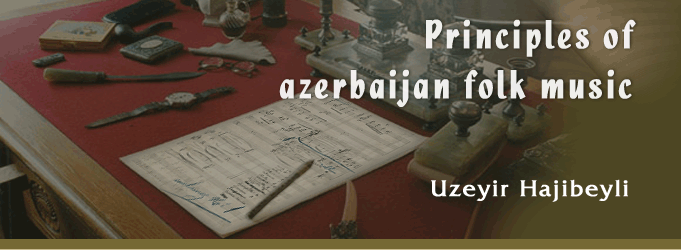

Part one
MAIN PRINCIPLES
I. SOUND SYSTEM
According to musicologists, "oriental music" (to which Azerbaijani music is related) has 1/3 and 1/4 tones, in addition complete tones and semitones. This tendency should not be applied to Azerbaijani folk music where semitone is the smallest interval. Octave in Azerbaijani music, as well as in European music contains 7 diatonic and 12 chromatic degrees. The only difference is that the octave's degrees in European music are equally tempered, but in Azerbaijani music, however, the octave degrees are tempered unequally. Therefore, while playing Azerbaijani melodies on tempered musical instruments (especially on the piano) one feels some discordance in the pitch of tones, particularly in the thirds and sixths. In Azerbaijani music the major third is narrower than tempered one. The minor third is wider than the tempered one. Semitones are wider, as well. The difference is about one comma.
Out of all residuary tones, the quarte and the quinte particularly almost coincide. As to the fact that Azerbaijani musical instrument tar has 17 degrees per string in the first octave, we have to say that the same 17 degrees exist in all octaves. For example, in piano music each octave has 7 simple sounds, 5 sharp and 5 flat sounds, 7+5 + 5=17 in total. Sharp and flat sounds are expressed by one key.
It is the same in the second octave of the tar where enharmonically equal sounds are expressed through each second gamma (parda). It is evident that after getting accustomed to tempered sounds a little, there could be no unpleasant sounds on tempered musical instruments, while playing Azerbaijani melodies. Some dissatisfaction with the third tones on the piano is compensated by more relief (than on the tar) sounding of the increased second.
[ MAIN PRINCIPLES: page 1 2 3 4 5 6 7 ]